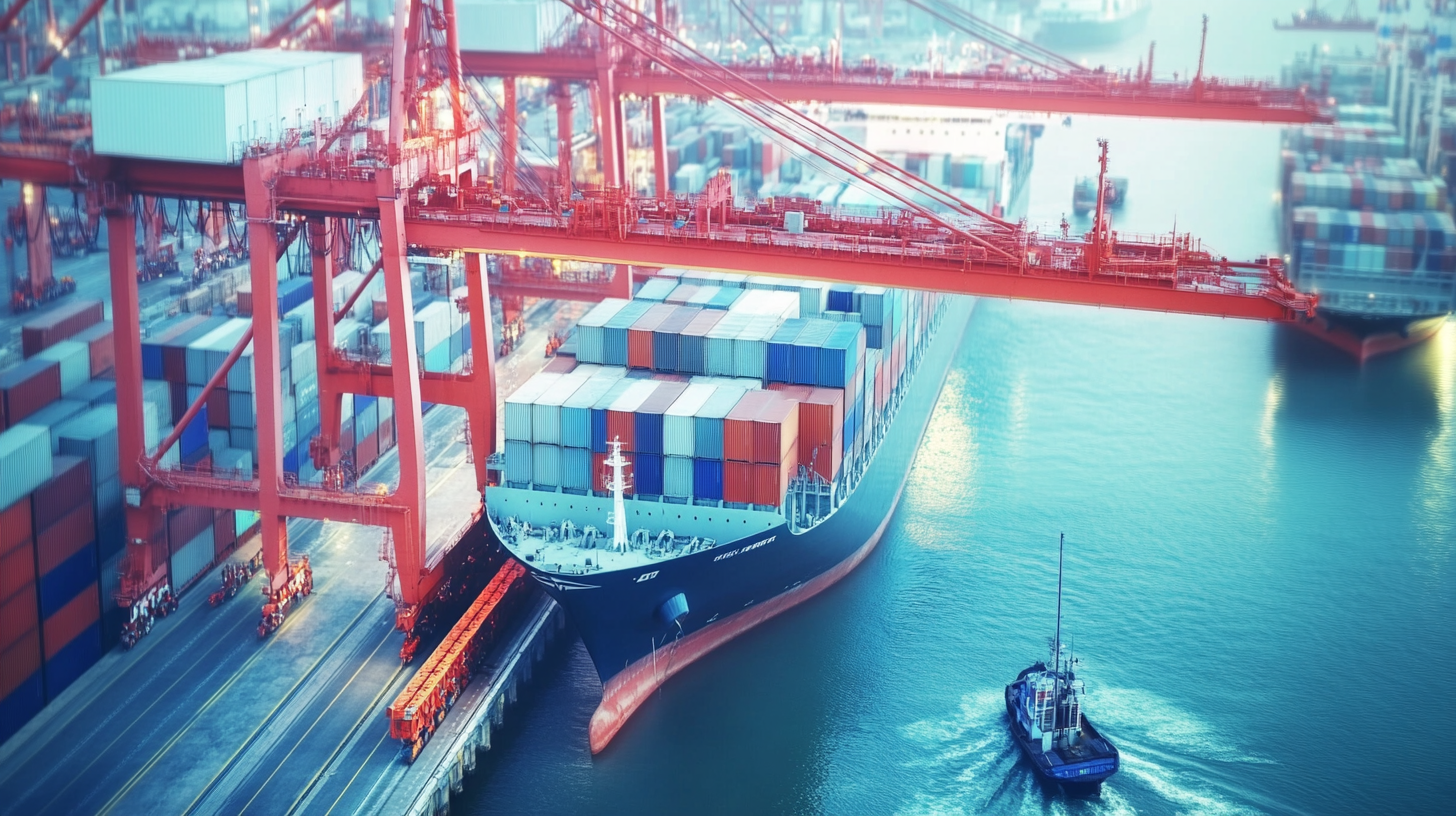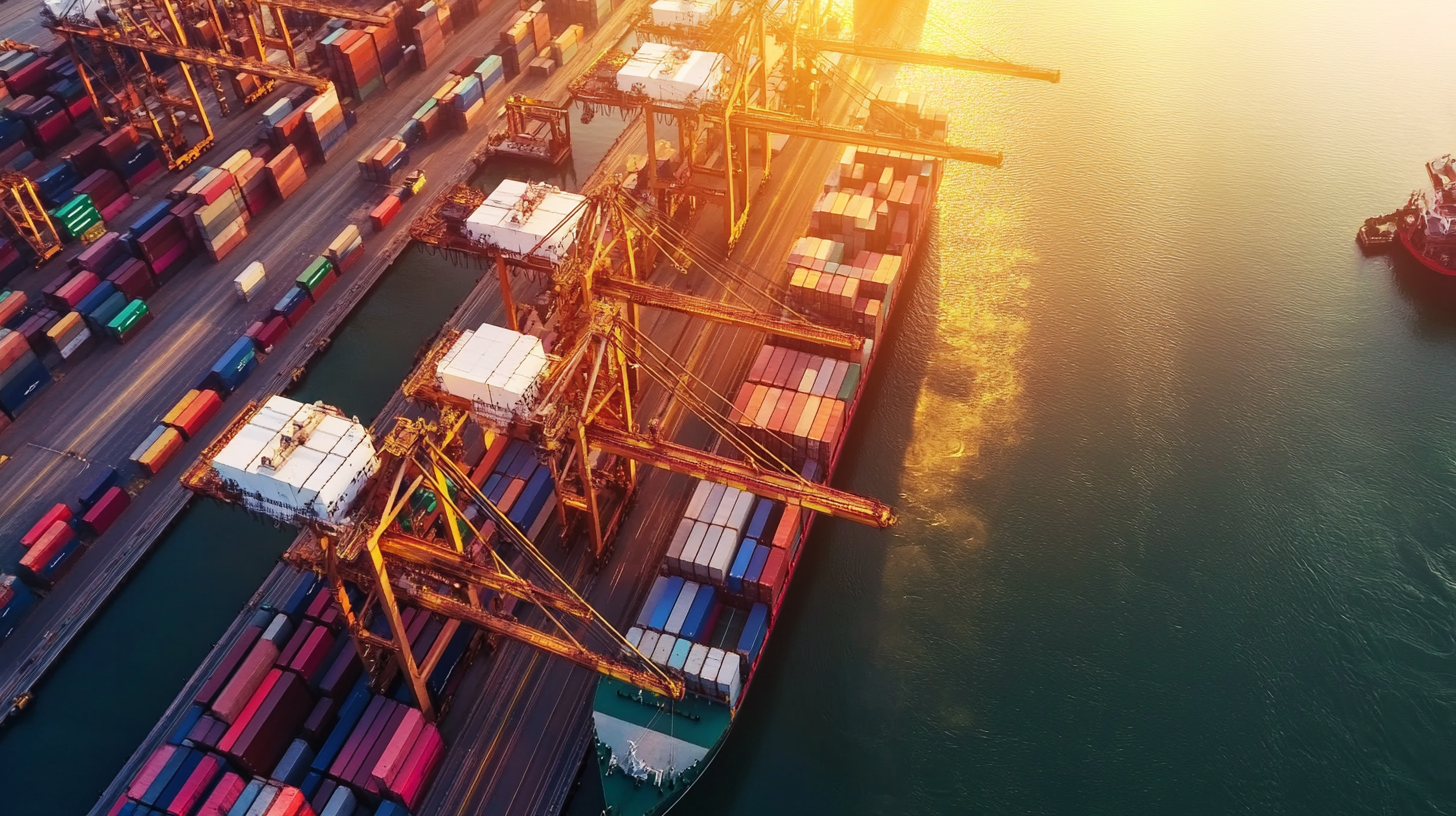
Top Global Exporting Factories Leading the Way in Manufacturing Excellence
In the dynamic landscape of global trade, manufacturers play a pivotal role in driving economic growth and innovation. According to the World Trade Organization, global merchandise exports reached a staggering $18.89 trillion in 2021, underscoring the significance of manufacturing industries in international markets. Leading manufacturers not only enhance competitive advantage through cutting-edge technology and streamlined operations but also set benchmarks in sustainability and efficiency. As businesses navigate challenges like supply chain disruptions and shifting consumer demands, the most successful exporting factories continue to thrive by embracing excellence in manufacturing practices. This blog will explore how these top manufacturers leverage strategic insights and operational prowess to remain at the forefront of the global economy, ultimately inspiring others to elevate their production standards and expand their reach.

The Role of Automation in Enhancing Manufacturing Efficiency in Global Exporting Factories
The role of automation in enhancing manufacturing efficiency is becoming increasingly pivotal in today's global economy. Factories are now integrating advanced technologies such as AI and cognitive computing to streamline operations and reduce costs. This shift not only boosts productivity but also aligns with global sustainability goals, helping factories to minimize their carbon footprint. For instance, a significant trend is the adoption of smart factories, which utilize data analytics to optimize production processes in real time, ensuring that resources are used effectively.
Tips for implementing automation in manufacturing include starting with small-scale pilot projects to assess the impacts before full-scale adoption. Engaging employees in this transition is crucial; their insights can be invaluable in optimizing automated systems. Additionally, continuous training and skill development programs for the workforce will help them adapt to new technologies while ensuring that the human element remains integral to production.
As manufacturing jobs evolve, factories must find a balance between leveraging automation for efficiency and maintaining employment levels. Adjustments in workforce roles may be necessary, with an emphasis on reskilling workers to manage and operate automated systems. Embracing this technological transformation will help factories not only keep pace with global demands but also drive innovation in a competitive landscape.
Key Performance Indicators: Measuring Success in Manufacturing Excellence Among Leading Factories
Manufacturing excellence is not only a goal but a necessity for global exporting factories aiming to stay competitive in today’s fast-paced economy. Key Performance Indicators (KPIs) serve as essential metrics to gauge success in this pursuit. For instance, a recent report by the International Institute for Production Research highlighted that factories employing KPIs such as Overall Equipment Effectiveness (OEE) and First Pass Yield (FPY) experienced up to a 20% increase in production efficiency. These metrics provide insight into equipment performance and product quality, enabling manufacturers to make informed decisions.
To enhance performance, factories should implement strategies that focus on continuous improvement. One effective approach is adopting Lean Manufacturing principles, which can reduce waste and improve process efficiency. A study from the Manufacturing Institute revealed companies utilizing Lean practices reported a 30% reduction in operational costs.
**Tips:** Regular training for employees on KPI significance can foster a culture of excellence. Additionally, investing in real-time data analysis tools allows for quicker responses to inefficiencies, thus keeping the production lines agile and responsive to market demands. Building a solid framework around KPIs will ultimately position these factories as leaders in the manufacturing sector.
Top Global Exporting Factories Leading the Way in Manufacturing Excellence
| Factory Location | Annual Production (Units) | Revenue ($ Million) | Employee Efficiency (Units/Employee) | Quality Score (Out of 100) | Sustainability Index (Out of 10) |
|---|---|---|---|---|---|
| Asia | 1,200,000 | 750 | 240 | 95 | 8.5 |
| North America | 800,000 | 600 | 200 | 92 | 7.0 |
| Europe | 950,000 | 700 | 230 | 90 | 8.0 |
| South America | 500,000 | 300 | 150 | 85 | 6.5 |
| Africa | 400,000 | 250 | 120 | 80 | 5.0 |
Sustainability Practices: How Top Exporters are Shaping Eco-Friendly Manufacturing Standards
 As global awareness of environmental issues escalates, top exporting factories are stepping up to set new standards in eco-friendly manufacturing. According to the International Federation of Robotics, industries that adopt sustainable practices can increase their operational efficiency by 25% while decreasing carbon emissions by up to 40%. This commitment to sustainability not only benefits the environment but also enhances the competitive edge of these factories in the global market.
As global awareness of environmental issues escalates, top exporting factories are stepping up to set new standards in eco-friendly manufacturing. According to the International Federation of Robotics, industries that adopt sustainable practices can increase their operational efficiency by 25% while decreasing carbon emissions by up to 40%. This commitment to sustainability not only benefits the environment but also enhances the competitive edge of these factories in the global market.
Leading manufacturers are integrating green technologies such as renewable energy sources and waste reduction processes into their operations. A report from McKinsey indicates that companies focused on sustainable practices see an 80% higher chance of attracting investment and achieving long-term profitability. These practices include using recycled materials in production and implementing energy-efficient machinery, ensuring that factories not only comply with environmental regulations but also drive innovation forward.
Tip 1: Start with a comprehensive sustainability audit to identify areas where improvements can be made, such as energy use and waste management.
Tip 2: Collaborate with suppliers who prioritize eco-friendly materials, helping to create a sustainable supply chain that supports your overall green initiatives.
Technological Innovations: The Impact of AI and IoT on Global Manufacturing Competitiveness
The integration of Artificial Intelligence (AI) and the Internet of Things (IoT) is transforming global manufacturing, driving unparalleled levels of efficiency and competitiveness. According to a report by McKinsey, companies that adopt AI technologies can improve their productivity by up to 40%, significantly cutting operational costs while enhancing product quality. IoT devices further complement this by enabling real-time data collection and analysis, allowing manufacturers to anticipate maintenance needs and streamline supply chain management. This level of technological advancement not only boosts output but also fosters innovation in product development.
**Tip 1:** Manufacturers should invest in AI training programs for employees to ensure that they are equipped to leverage new technologies effectively. This upskilling is essential for maintaining a competitive edge in an increasingly automated landscape.
Moreover, industries embracing IoT can track performance metrics continuously, leading to smarter decision-making. A report by Deloitte indicates that businesses utilizing IoT in their operations report a 37% increase in overall productivity. The synergy between AI and IoT technology creates a feedback loop that continuously optimizes processes and product delivery timelines.
**Tip 2:** Companies should focus on integrating IoT solutions that fit within their existing infrastructure to minimize disruption while maximizing the benefits of real-time data insights.
Top Global Exporting Factories - Impact of AI and IoT on Manufacturing Competitiveness
Workforce Development: Strategies for Skilled Labor Growth in Leading Export Manufacturing Sectors
In the competitive landscape of global export manufacturing, workforce development is crucial for sustaining excellence. Leading factories recognize that investing in skilled labor is not simply beneficial; it's essential for maintaining a competitive edge. These manufacturing hubs implement targeted strategies to cultivate their workforce, focusing on comprehensive training programs, partnerships with educational institutions, and continuous professional development.
One effective approach is the establishment of apprenticeships and mentorship initiatives within these factories. By collaborating with local colleges and vocational schools, companies can tailor their training modules to align with industry needs. This synergy not only equips students with relevant skills but also ensures a steady pipeline of qualified workers ready to meet the industry's evolving demands. Furthermore, ongoing training programs help current employees advance their skills, fostering a culture of innovation and adaptation in an ever-changing marketplace.
Moreover, embracing technology is vital in enhancing workforce capabilities. Factories are increasingly adopting advanced manufacturing techniques and automation, necessitating a workforce adept at operating these sophisticated systems. By prioritizing digital literacy and offering specialized training in new technologies, export manufacturers can empower their employees, ultimately leading to increased productivity and superior product quality. This proactive focus on workforce development is paving the way for manufacturing excellence on a global scale.

